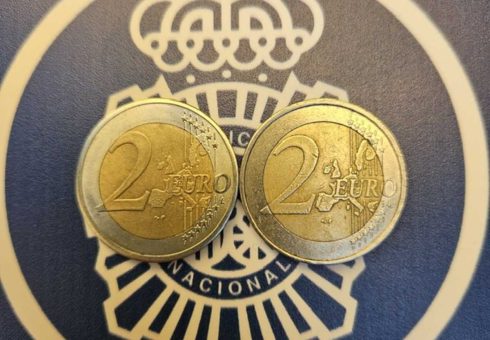When delving into the digital currency realm, it’s crucial to distinguish between two often-confused terms: crypto token vs coin. What sets them apart, and why does the difference matter to investors, developers, and users alike? This article directly addresses the nuances separating coins, which are digital currencies with their own blockchains, from tokens, digital assets that operate on existing blockchain platforms. Discover the unique roles they play in the wider crypto ecosystem as we explore the substantive differences of crypto token vs coin without fluff or sales pitches. Expect to uncover their definitions, uses, and impacts on the market.
Key Takeaways
- Crypto coins are independent, native currencies of their own blockchains, like Bitcoin or Ethereum, serving as both a store of value and a medium of exchange, while tokens exist on top of other blockchains, offering diverse functionalities such as representing physical assets, providing platform services, or enabling decentralized governance.
- There are various types of tokens with differing purposes: utility tokens generate access to services within a blockchain ecosystem, security tokens represent digital ownership of assets and must comply with regulatory frameworks, and non-fungible tokens (NFTs) are unique digital items with specific ownership on the blockchain.
- The distinction between crypto coins and tokens is also technical and economic; coins require creating and maintaining a unique blockchain with native circulation mechanisms, while tokens use existing blockchains and smart contracts, which impact market cap, liquidity, and investor considerations in the cryptocurrency market.
Understanding Crypto Coins
Crypto coins are the pillars of the cryptocurrency market, representing encrypted digital assets that fulfill both the functions of a store of value and as a medium for transactions. They operate on their dedicated blockchains.
Cryptocurrencies such as Bitcoin, sometimes referred to as ‘digital gold’, stand-alone and maintain an autonomous presence separate from any pre-existing blockchain network. With its limited supply fostering its reputation against inflationary pressures, Bitcoin has captivated many with its potential for scarcity-driven appreciation in value. Ether is another example. It gains value through its involvement within Ethereum’s ecosystem supporting decentralized applications (dApps) and driving expectations for increased valuation over time.
Nevertheless, there exists some confusion where “crypto coins” are often used interchangeably with “crypto tokens,” despite these two being fundamentally different.
Tokens do not act as native currencies for their underlying blockchain platforms but rather exist atop an existing blockchain network facilitating various utilities or representations of assets within that system—contrasting significantly from how crypto coins function autonomously like traditional fiat money systems in countries worldwide.
Now let us explore. Into this nuanced aspect by examining crypto tokens more closely to understand their role within the broader landscape of blockchains and decentralization.
Understanding Crypto Tokens
In the domain of blockchain, crypto coins rule as sovereign entities on their unique blockchain kingdoms. On the flip side, cryptocurrency tokens — alternatively referred to as crypto tokens — play a versatile role across these and additional digital domains. Unlike crypto coins which command their respective blockchains, these tokens reside on pre-established platforms such as Solana, Cardano, or BNB Smart Chain. These adaptable forms of digital money morph effortlessly.
One moment they serve as currency and the next they embody tangible assets. They pivot from enabling services on technological platforms to functioning as tools for communal governance within decentralized autonomous organizations (DAOs). In this vibrant ecosystem exists a specific token tailored for every conceivable function exemplified by familiar entities like Tether, Uniswap, and MATIC that each contribute harmoniously to this expansive blockchain narrative.
As we delve deeper into this world’s nuances, different categories of tokens weave added intricacy and potential into the intricate mosaic known colloquially as ‘crypto’.
Utility Tokens: Fueling Blockchain Operations
Utility tokens are the lifeblood of blockchain operations, offering access to services or products within a project’s ecosystem. These tokens are not mere digital currencies; they are keys to unlock functionalities and services within the blockchain network. Some examples of utility tokens include:
- Cronos (CRO), a native token used for trading and payments within its own blockchain ecosystem
- Chainlink’s LINK token, which powers decentralized oracle networks essential for Web3 applications
- Polygon’s MATIC token, which underpins Layer-2 scaling solutions for the Ethereum blockchain and also serves as a governance tool.
The utility token ecosystem is vast, with each token serving a specific purpose within its respective blockchain network.
The utility of these tokens extends into creative realms as well. Here are some examples:
- The Sandbox’s SAND token is integral to its virtual gaming environment, managing transactions that revolve around digital real estate.
- Ecoterra’s ECOTERRA token incentivizes environmental sustainability by rewarding recycling efforts.
- ERC-20 tokens on the Ethereum platform facilitate a range of functions from digital advertising transactions to governance in platforms like ShibaSwap.
Each utility token is a cog in the blockchain machine, propelling its own project’s vision toward fruition.
Security Tokens: Investment Instruments
Security tokens represent a modern evolution of classic investment tools, capturing asset ownership within the unalterable record-keeping system of blockchain technology. Bridging finance and technological innovation, these tokens open up fresh avenues for investors to harness the power of digital assets while operating under established regulatory safeguards.
They are regulated in a manner similar to conventional securities, with government entities implementing stringent regulations that offer investor protection. Unlike traditional instruments that depend on physical documentation and central authorities’ credibility, security tokens ensure more direct and permanent evidence of possession through the clear-cut trail offered by blockchain.
Non-Fungible Tokens (NFTs): Unique Digital Collectibles
In the digital landscape, non-fungible tokens (NFTs) stand out for their unparalleled individuality. Distinctly identified and with ownership details preserved on the blockchain, these tokens are not just unique but also transformative, especially in the art sector. The advent of NFTs has enabled auction houses to manage and conduct sales of both digital and physical artworks in novel ways that have upended traditional norms within the collectibles domain.
Within gaming realms and expansive metaverse environments, personalized experiences flourish thanks to NFTs. These enable players to trade items such as bespoke avatars, exclusive environment features, and proprietary in-game currency. Beyond providing a new dimension to artistic expression and entertainment platforms like games or virtual worlds. They also forge novel interaction channels between fans—the supporters now have avenues to own rare collectible NTF’s related special privileges from decision-making rights or access into select happenings involving beloved artists sports franchises.
This emerging epoch underscores how notions of digital proprietorship are reshaping our real-world engagements—modifying interactions with treasured assets throughout diverse aspects of daily existence.
The Technical Divide: Coin Creation vs Token Issuance
Coins and tokens represent two fundamentally different types of crypto assets, each with unique technical underpinnings. The process of creating a coin is extensive, involving the construction and upkeep of its own native blockchain—a considerable endeavor that requires significant investment in time, knowledge, and resources. Examples include Bitcoin and Ethereum whose coins come into existence through resource-intensive mechanisms like mining or staking facilitated by consensus protocols such as Proof of Work (PoW) or Proof of Stake (PoS). It is this intricate infrastructure that distinguishes coins within the broader cryptocurrency framework.
On the other hand, creating tokens benefits from a more efficient approach thanks to smart contract technology on established blockchains. This method eliminates much of the complexity and resource needs associated with launching a new coin. As a result, there has been an influx of diverse tokens tailored for various purposes across blockchain ecosystems. Whether they’re meant for governance roles, utility functions or representing digital assets. Tokens are carving out their place in the world of blockchain owing largely to how smart contracts make them relatively simple to produce and integrate.
Economic Implications: Market Cap and Liquidity Considerations
The total economic value of digital assets, such as coins and tokens, is encapsulated in their market cap. This valuation reflects the collective worth of these cryptocurrencies circulating within the crypto sector. Despite its growth, the cryptocurrency realm shares similarities with traditional financial markets, including susceptibility to volatility and inconsistencies in trading volumes. Yet it stands apart owing to characteristics unique to its space—namely user anonymity and a varied investor demographic—which lead to distinct kinds of market disruptions.
In any trading environment, liquidity plays an essential role—it’s the ease at which assets can be traded without significant impact on their prices—and this aspect holds particular importance in the world of crypto. The relationship between overall economic liquidity and that found specifically within cryptocurrency markets is more visible here than elsewhere. When there’s less liquidity available economy-wide, we may see a corresponding dip in asset fluidity over time within crypto spaces leading often to pronounced abnormal returns indicative of possible mispricing issues for investors who should remain vigilant about these dynamics when dealing with digital currencies.
Practical Applications: How Coins and Tokens Are Used

Crypto coins and tokens offer much more than mere opportunities for speculation. They serve functional roles that have become integral to the digital era. Crypto coins, in particular, are becoming increasingly prominent in peer-to-peer financial exchanges, offering an alternative option to conventional investment avenues while playing a crucial role in safeguarding transactions on blockchain networks. Notably, corporate giants such as McDonald’s and Tesla are beginning to explore crypto payments—a development that might signal a shift toward widespread commercial adoption of cryptocurrency. Certain coins like DASH are pushing boundaries by enhancing community involvement within decentralized autonomous organizations (DAOs) through the innovative use of smart contracts.
Tokens differ from their coin counterparts by being multifaceted tools within the ecosystem of blockchain technology—they:
- Drive operations on decentralized exchange platforms
- Facilitate intricate functionalities of smart contracts
- Are key players within the growing field of decentralized finance (DeFi)
- Push forward what can be achieved with digital assets beyond traditional confines, even venturing into realms like digital artwork.
In carving specific niches for themselves across diverse sectors employing existing blockchain frameworks—including aiding initial coin offerings—both tokens and crypto coins underscore how far-reaching and adaptive blockchain technology is proving itself.
Legal Landscape: Regulatory Perspectives on Coins and Tokens
The emergence of crypto has captured the attention of regulatory authorities globally, as nations define their positions on these emerging assets. Regulatory measures range from the European Union’s Markets in Crypto-Assets (MiCA) to initiatives by the United States SEC, with each jurisdiction focusing on consumer protection and overseeing businesses engaged in crypto activities. Countries like the UK, Japan, Australia, Singapore, and Brazil have given cryptocurrencies legal recognition as either property or financial instruments while establishing systems for registration and licensing within this sector.
Not all countries are welcoming towards cryptocurrencies. For instance, China has adopted a stringent stance by prohibiting cryptocurrency exchanges and transactions across its territory completely. This varied regulatory tapestry highlights just how intricate navigating through coins and tokens’ legislative terrain can be. As advancements continue within this industry, so must evolve regulations that aim at safeguarding investors’ interests without stifling creative advancements.
Investing in Crypto: Coins vs Tokens
Investing in the crypto world demands a clear understanding of what sets coins apart from tokens. Coins are the native currencies of their blockchains, designed primarily for storing value and facilitating exchanges. Tokens, with their diverse functions, offer additional possibilities, from granting access to services to representing ownership stakes. These differences are not trivial; they are critical for investors to discern the utility and value proposition of various projects within the crypto space.
As an investor, comprehending the fundamental differences and intended uses of coins and tokens is paramount. This knowledge allows for a more nuanced approach to investment, as the potential and purpose of these assets can differ greatly within the cryptocurrency ecosystem. Whether seeking to hold a coin as a store of value like bitcoin or engage with a token that offers governance rights, investors must tread with insight and clarity.
Innovations and Trends: The Future of Crypto Assets
The horizon for crypto assets is ablaze with innovations and trends that promise to redefine the landscape. Some of these trends include:
- Decentralized finance (DeFi) is poised for growth, with future protocols expected to offer more efficient exchanges and user-friendly experiences.
- Decentralized autonomous organizations will further democratize governance, allowing for community-led decision-making in DeFi protocols.
- The integration of synthetic assets and derivatives is set to diversify the financial instruments available to users.
These developments are exciting and have the potential to revolutionize the crypto industry.
Improvements in cross-chain communication are anticipated to bolster interoperability between blockchain networks, while artificial intelligence and machine learning could revolutionize trading algorithms and risk management tools. The relentless march of blockchain technology is likely to continue influencing the global financial landscape, fostering innovation and broad adoption. As these trends unfold, the future of crypto assets looks set to be as dynamic and multifaceted as the blockchains they inhabit.
Summary
In navigating the complex world of crypto coins and tokens, we’ve uncovered the key differences in their creation, usage, and potential. From the sovereign nature of coins to the multifunctional utility of tokens, the crypto ecosystem is rich with opportunities for users and investors alike. As the legal and economic landscapes continue to evolve, so too will the roles these digital assets play in our increasingly digital world. Let this exploration serve as a beacon, guiding you through the crypto universe with newfound knowledge and perspective.
Frequently Asked Questions
What is the fundamental difference between a crypto coin and a crypto token?
A crypto coin and a crypto token differ chiefly in terms of their foundational structure and intended function. A coin serves as both a store of value and a medium of exchange, functioning on its unique blockchain, whereas a token operates within the framework of an already existing blockchain and may fulfill diverse roles.
Can crypto tokens be used as a currency like crypto coins?
Certainly, while certain crypto tokens are designed to function as a medium of exchange within their unique ecosystems, their principal role typically extends beyond mere financial exchanges. These tokens not only act as currency, but also fulfill additional purposes.
Are security tokens the same as traditional securities?
Security tokens differ from conventional securities in that, although they signify asset ownership and comply with regulatory governance similar to traditional securities, they harness the power of blockchain technology to deliver a more direct and unalterable record of ownership.
How do non-fungible tokens (NFTs) differ from other crypto tokens?
Unlike fungible tokens, which are interchangeable and can be exchanged like-for-like on the blockchain, non-fungible tokens (NFTs) signify unique ownership and authenticate specific items or assets within the crypto domain, reflecting their individuality.
What role do utility tokens play in the blockchain ecosystem?
In the blockchain ecosystem, utility tokens are crucial as they grant access to a project’s network services, products, and exclusive platform functionalities. These tokens encourage active participation and streamline processes within the blockchain framework.








